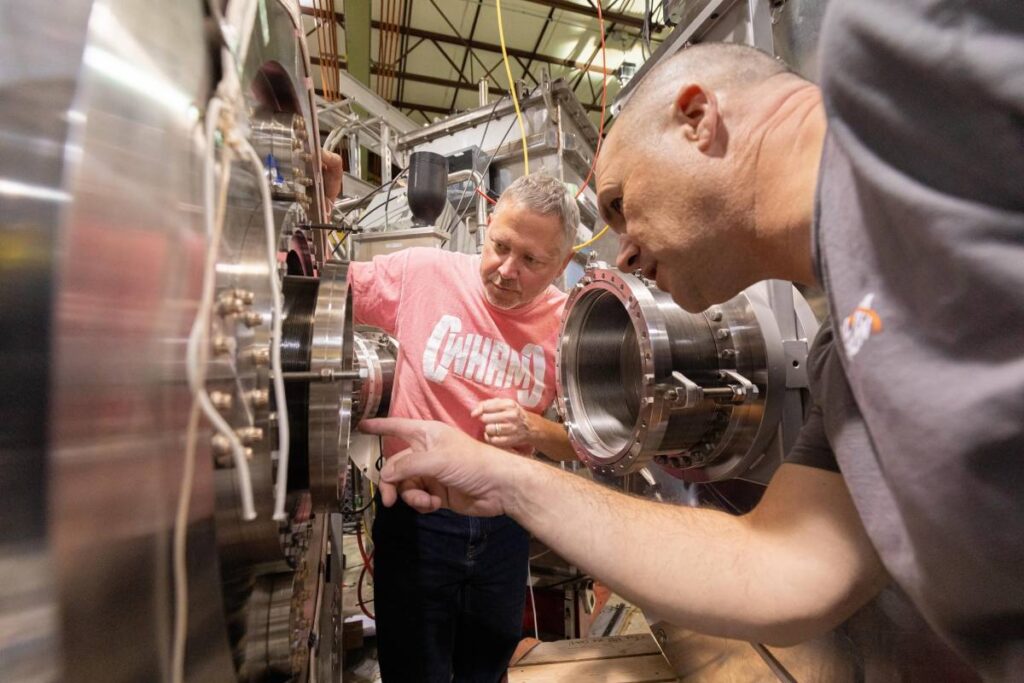A fusion experiment at the University of Wisconsin-Madison has set a record for the strongest, most stable magnetic field to confine plasma, raising new hope that upcoming demonstration reactors will fulfill the promise of producing more electricity than they consume.
The new magnets were provided by Commonwealth Fusion Systems (CFS), a pioneering nuclear fusion industry startup that delivered the equipment to the University of Wisconsin-Madison's WHAM experiment earlier this month. When the WHAM team cooled the magnets to operating temperature and passed powerful electric currents through them, the high-temperature superconductors generated a magnetic field of 17 Tesla, more than twice as strong as the fields used by high-resolution MRI scanners to image the human brain.
Strong magnets are essential for fusion power, which CFS and other research institutions are pursuing: every doubling of the magnetic field strength increases the power output of a reactor design by 16 times.
While WHAM has been up and running for several years, “this was the first plasma using the new magnets,” said Kieran Furlong, co-founder and CEO of Realta Fusion. Realta spun out of WHAM in 2022 but still works closely with scientists at the University of Wisconsin-Madison and the experiment itself.
The previous record was held by MIT's Alcator C experimental nuclear reactor, Furlong said.
 The plasma contained within the WHAM reactor lasted only a split second, but it was enough to set the record. Image credit: Mason Yu/University of Wisconsin-Madison
The plasma contained within the WHAM reactor lasted only a split second, but it was enough to set the record. Image credit: Mason Yu/University of Wisconsin-Madison
WHAM's record-breaking magnetic field is a full-circle moment, so to speak, that shows just how tightly interwoven the fusion industry is: Research on Alcator C and its successor, Alcator C-Mod, helped prove the physics underlying CFS' reactor and magnet design.
CFS was founded in 2018 as a spin-out from MIT to commercialize fusion power using a groundbreaking magnet design. Both CFS and Realta are working to deploy reactors that use powerful magnetic fields to hold burning plasma in place and fuse hydrogen nuclei together, a process that releases enormous amounts of heat. CFS' reactor is called a tokamak, which forces the plasma into a doughnut-like shape.
Meanwhile, Realta and WHAM are working on a magnetic mirror design, in which two powerful magnets spaced a set distance apart create a magnetic field that holds the plasma in a shape similar to a Tootsie Roll: The magnets compress the plasma at both ends, causing hydrogen ions to bounce back and forth in the thick part of the roll, where they collide and fuse, releasing heat.
WHAM will serve as a testbed for the mirror reactor design. Once a sufficient understanding is gained, Realta will build a demonstration reactor called Anvil, expected to be completed within the next decade. It will be similar to WHAM but larger, and will provide more data on the reactor design as well as a way for scientists and engineers to test how different materials behave in a working reactor.
Following the Anvil, Realta plans to build the Hammer, an evolution of the design that has two magnets at each end instead of one, which the company hopes will enable it to build longer reactors and thus produce more power.



